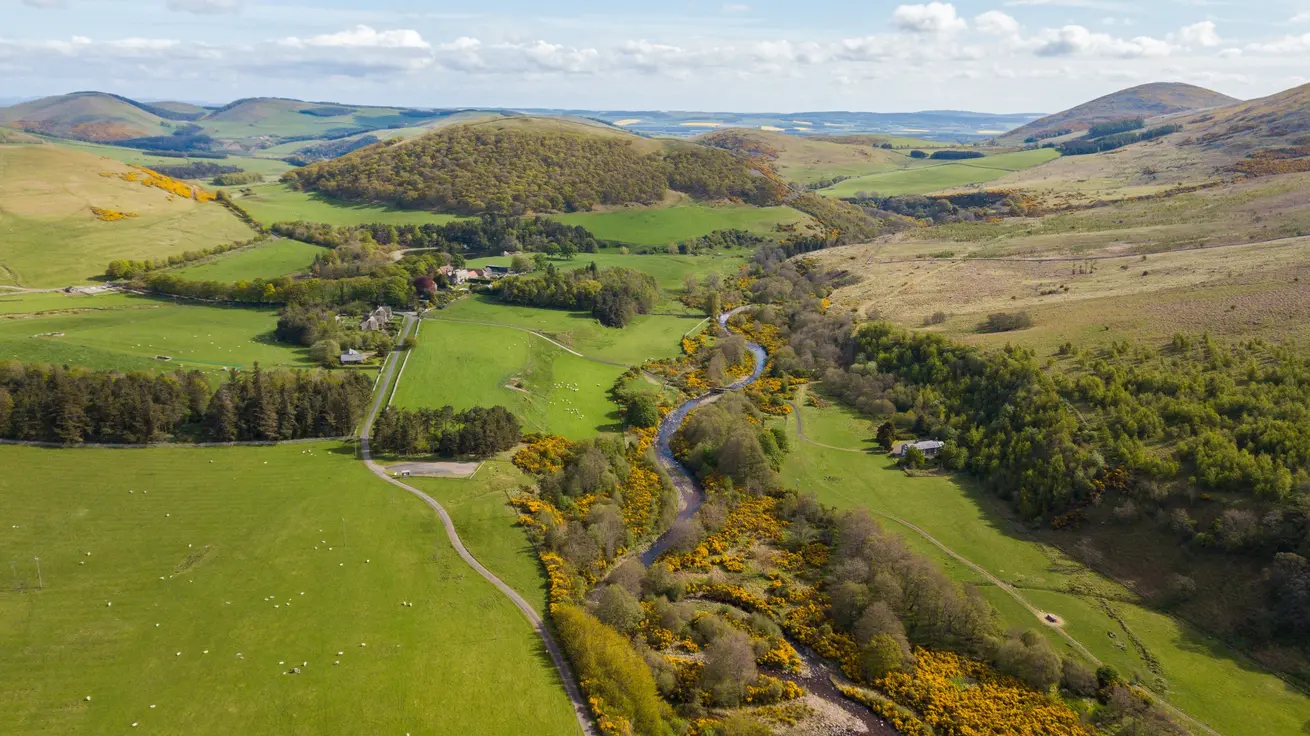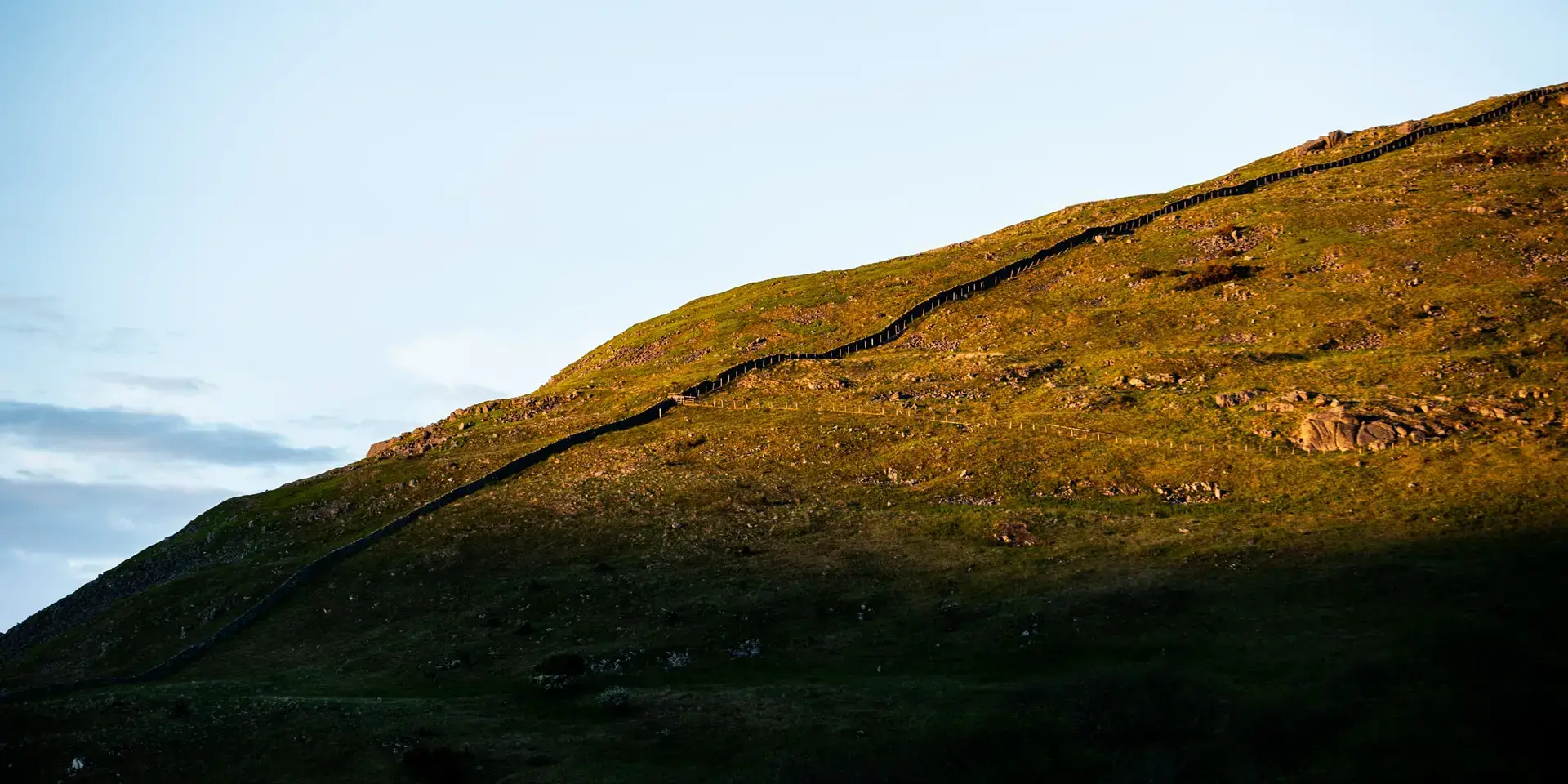
The lovely thing is it’s an amazing blend of ancient and modern; so if tumbled remains of hillforts and ramparts don’t appeal, or you want something a little more relaxing, there are other interesting sites and places to see which don’t involve climbing hills. Having said that, the joy of making it to the top of these breathtaking hills – with such evocative names as Sinkside, Great Hetha and Blackhaggs to name but three – is the reward of panoramic views and far horizons stretching as far as the eye can see.
Of course, that’s on a fine day; when the weather is inclement the hilltops can be inhospitable places, which is largely why the ancient peoples abandoned their round house homes as the climate grew colder.
Indeed, more recently during the Second World War it was often the combination of atrocious weather conditions coupled with less advanced navigation systems and simple inexperience that claimed the lives of several Allied airmen – and Germans too – whose planes crashed on the Cheviot and its surrounding hills.
After one crash in particular, the B17 Flying Fortress with a nine-man American crew aboard, came the now legendary story of rescue by local shepherds including John Dagg and his black and white collie, Sheila. Their heroism was honoured with the award of the Dickin Medal for Gallantry to Sheila, thus she became the first ever civilian dog to receive the coveted medal with its tri-coloured ribbon, and to her master the British Empire Medal.
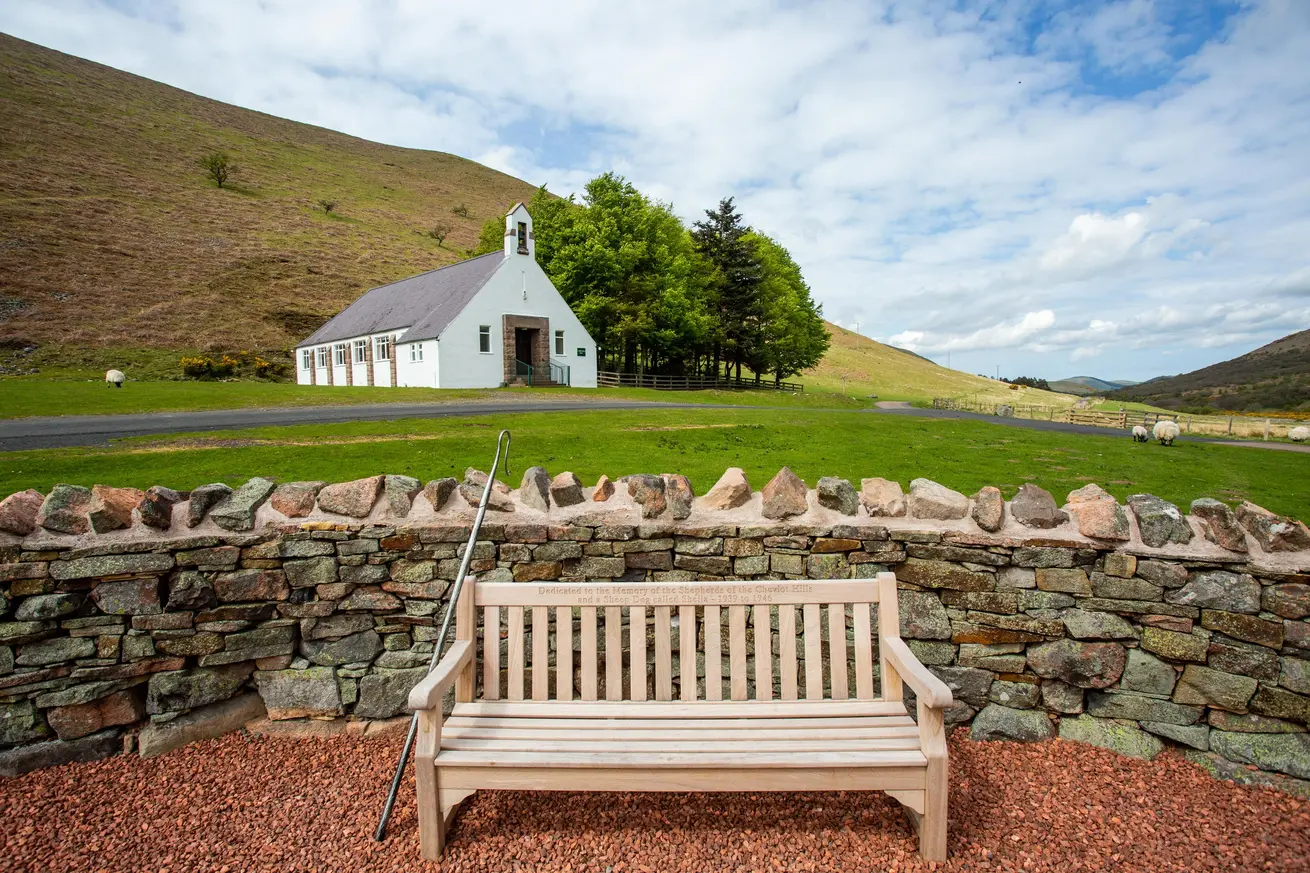
Among the earliest known occupants of the valley were the Neolithic hunters and gatherers of some 4500 years ago. It is they who are believed to have constructed the stone circle near Hethpool which archaeologists recognise as a ‘henge’ monument perhaps with sacred connotations or more simply a ‘gateway to the Cheviot’.
Following on, in about 2000 BC came the Bronze Age peoples. They constructed wooden round houses – some on hill tops – to live in and led a more settled life than their nomadic forebears. They in turn were followed by the Iron Age settlers (800BC-AD79) who were the architects of the impressive hillfort settlements we see today though some may merely have rebuilt over Bronze Age foundations.
The Romans (AD79-AD410) had no direct impact on the valley though under their rule settlement building continued across the Cheviot landscape – and in the College Valley – a period termed by archaeologists as the Roman Iron Age. Nothing is really known of what went on afterwards in the ‘Dark Ages’ the early medieval days, however, by the late 1200s trouble and strife came to the people who lived here in the form of the Scottish raiders. For about 300 years, until the Union of the Crowns in 1603, lawlessness reigned. To be fair it wasn’t just the Scots who caused the problems, it was family feuding on both sides of the border with tit for tat raids when cattle and livestock were rustled and people killed. Looting, pillaging and violence were the order of the day in this poverty-stricken community. With its close proximity to the Scottish border the College Valley was certainly not a comfortable place to be in those days.
As peace and quiet slowly returned the 18th and 19th centuries witnessed the development of farming and shepherding, initially on small tenanted farms which gradually merged into bigger ones and ultimately into the College Valley Estate that is here today.
To help you appreciate this wonderful place we’ve devised a Valley History Trail which highlights the many places and things for you to see and enjoy. Those in the valley bottom can be easily visited by car or involve just a gentle stroll. However, the hillforts and the plane crash sites can only be visited on foot, some with quite steep climbs. You will need to be fit, very well equipped with suitable footwear, clothing, food and a map and compass or GPS.
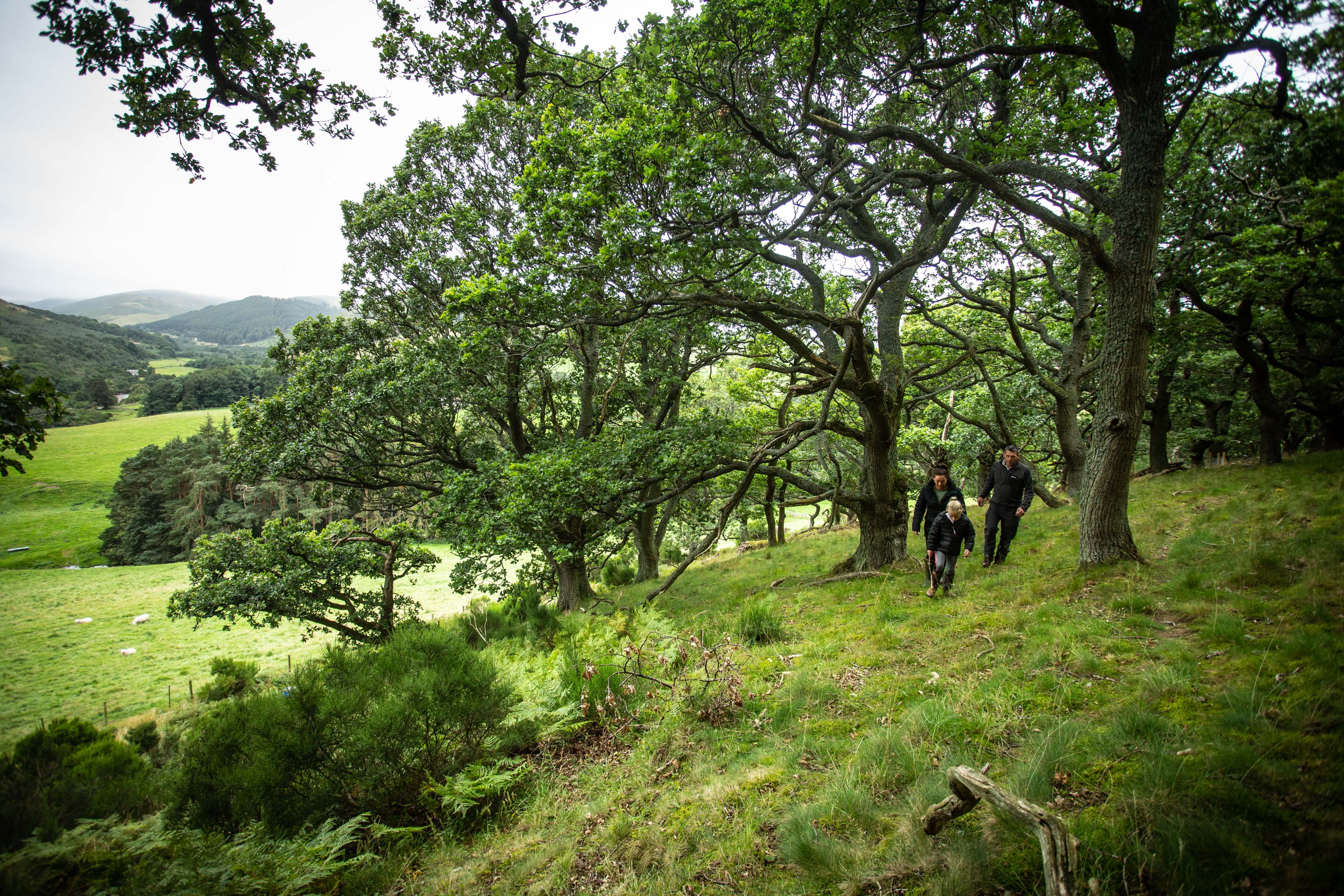
As you approach the valley just about half a mile north of Hethpool two woods, one on either side of the road, remind us of Admiral Lord Cuthbert Collingwood’s association with the College Valley. He is remembered for taking command of the Fleet after Nelson’s death at the Battle of Trafalgar in 1805 and subsequently leading the British navy to victory over the French.
Collingwood’s connections with the valley stem from his wife Sarah (daughter of John Blackett, Lord Mayor of Newcastle) who inherited Hethpool from an aunt though the Admiral’s visits were few and far between because most of his life was spent at sea.
After Trafalgar he was made a peer and awarded the title ‘Baron Collingwood of Caldburne and Hethpoole’.
His reaction may raise a wry smile. ‘And so I have a great Barony, it may be called a Barreny to me – value 30s a year or thereabouts. But if I live long enough I will make it a place of consideration.’
Collingwood had a great love of trees especially oaks, and was known to carry acorns in his pocket just ready to pop into the ground. He knew better than most that oak was needed to keep the navy supplied with warships. From his letters we know that Sarah his wife began planting trees at Hethpool in the early 1800s thus fulfilling his wishes of ‘enriching and fertilising that which would otherwise be barren’. However, after 1803 Collingwood was never again to set foot on British soil. He died at sea in 1810 and three years later his wife planted the oak trees on the Bell, known locally as the Collingwood Oaks, one so it is said, for every British ship that fought at Trafalgar. There is no public access.
A new wood of oaks was planted in 2005 to commemorate the bi-centenary of the famous battle and a service of dedication was held to mark the occasion. A plaque mounted on a fine stone pillar records the name ‘Trafalgar Wood Admiral Lord Collingwood 1748-1810’. The wood can be accessed through a wicket gate on the west side of the road.
Once a more populous place than now Hethpool in the Medieval period could boast a brewery, a chapel and a watermill. The latter was first recorded in 1212 and may well have processed grain grown on the medieval rig and furrow or the well preserved cultivation terraces on nearby White Hill. The mill stood on the site we know today as Hethpool Mill which is now a holiday home. It was last recorded as working in 1855 but by 1887 was occupied by a shepherd.
The hamlet, if we can term it that, was in the front line of the Border wars which began after Edward 1, the English king went to war with Scotland in 1296. In 1342 its lands were reported to have been ‘for the most part devastated by the Scots, rebels and enemies of the King’. A return of 1377 listed 70 adults and in 1415 mention is made of the pele tower ‘a little stone house or pyle which ys a great releyffe to the tenants thereof.’ But it’s no wonder that with two more centuries of carnage, plus the Battle of Flodden in 1513 that by the mid 1500s tenancies had declined as raids, disease and recession took their toll. (The ruined pele survives today but there is no public access).
Life settled down after James VI of Scotland became James I of England in 1603 and by 1687 the situation was calm enough for a new farmhouse to be built, the date-stone now incorporated into Hethpool House.
Remodelled in 1919 by the new owner, Tyneside businessman Sir Arthur Munro Sutherland, the house is in the Arts and Craft style, the architect being George Reavell of Alnwick. Later additions of 1928 including the conical roof tower were by Robert Mauchlen, another well known north east architect of the 1920s. The farm cottages, circa 1926, in part modelled on the house are described as amongst the finest to be seen anywhere in Northumberland.
Sir Arthur bought Hethpool with its 1294 acres as a sporting and farming estate, a country retreat where he could escape from the demands of life on Tyneside. He owned a shipping company and the Newcastle Chronicle newspaper and was also Lord Mayor of Newcastle. Over the years he bought up the other farms in the valley and carried out many improvements, notably building new farmhouses, hard surfacing the main roadways and constructing four bridges.
At the time of Sir Arthur’s death his “Hethpool Estate” extended to some 12,600 acres and stretched right to the top of Cheviot. It was put up for auction in October 1953 and sold to the Sir James Knott Trust for £75,000.
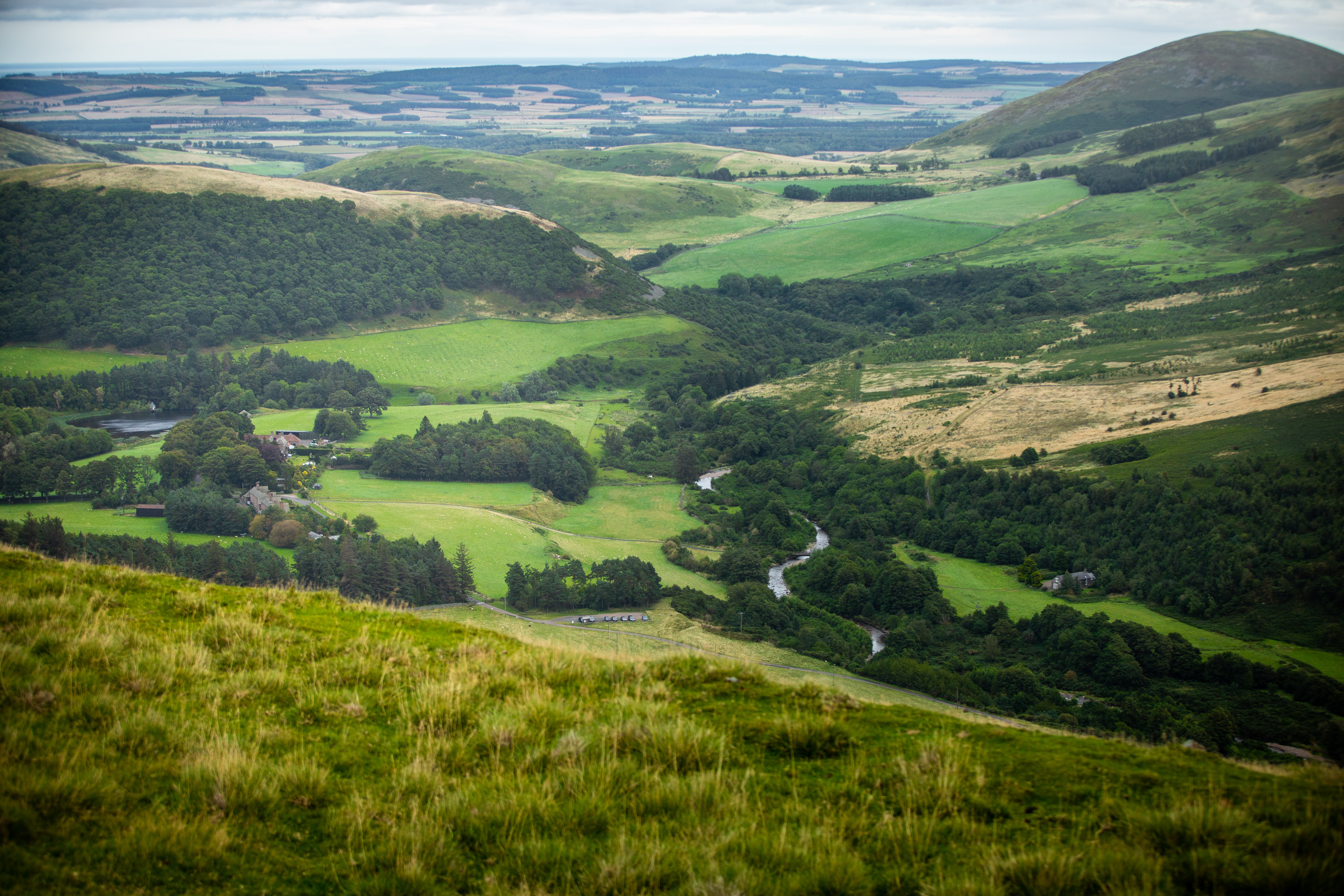
Heading up the valley just past Hethpool, in the grass field beside the road, is a ‘circle’ of at least 23 flattened stones which archaeologists recognise as a ‘henge’ monument. Centuries of ploughing have destroyed its once circular shape but as you walk around it try and count the stones and pause for a moment to reflect on its age ….four to five thousand years old! Set out in late Neolithic times, about 2500BC, perhaps it was a seasonal meeting place for the nomadic hunter-gatherers, maybe a sacred site or one of ritual importance, lying as it does beside the way to the Cheviot.
Interestingly, just over one mile away, to the south of the hillfort at West Hill, near Kirknewton, two boulders overlook the pass into the valley of the College Burn. From them you get a clear view of the Hethpool circle and archaeologists wonder if they marked a territorial boundary of the people who built the henge or were perhaps signposts to the monument itself.
Stand beside the circle, facing the road, and look up the hill at the amazing stone wall snaking up to Wester Tor. With its lovely symmetry just imagine the effort involved hauling the stone and what skill to build such a wall on such a steep hillside not to mention the walking up and down for it must have taken the walling men several weeks to complete their task.
Continuing along the road you will pass Whitehall on the left, very aptly named, and once a farm in its own right of some 663 acres stocked with about 380 sheep.
A little further on, occupying a splendid situation in a field to the right is an intriguing wooden bungalow, not unlike a rather grand beach hut, which inevitably attracts the comment ‘what is that’?
Its history dates back roughly to the 1920s when Miss Emma Pease of Alnmouth had it built as a holiday home. By all accounts she was a lovely lady who came up by car with her chauffeur and lady’s maid for holidays in the valley. She took a great interest in the little school at Southernknowe, entertaining the children to picnics at her bungalow and a jar or box of sweets at Christmas time. In 1930, on the day that the last passenger trains ran to and from Kirknewton Station she invited the children and their mothers to her house at Alnmouth for tea! For most of the children it was their first train journey and first-ever trip to the seaside.
The hall was built by College Valley Estates in 1961 as a meeting place for local shepherds and their families. It replaced the old Sutherland Hall, constructed of wood with a corrugated tin roof, which stood in a field on the opposite side of the road to Miss Pease’s bungalow.
Interestingly, the old hall was also a holiday bungalow for the Dewar family from Berwick, before Sir Arthur converted it in the 1940s. Lit by Tilley lamps it was a popular venue for dances. In those days there was no bar and everyone brought their own drink the bottles being slipped into the haystack which stood outside. Such good nights were they that some bottles got forgotten only to appear when the Fleehope shepherd cut into the haystack for winter fodder!
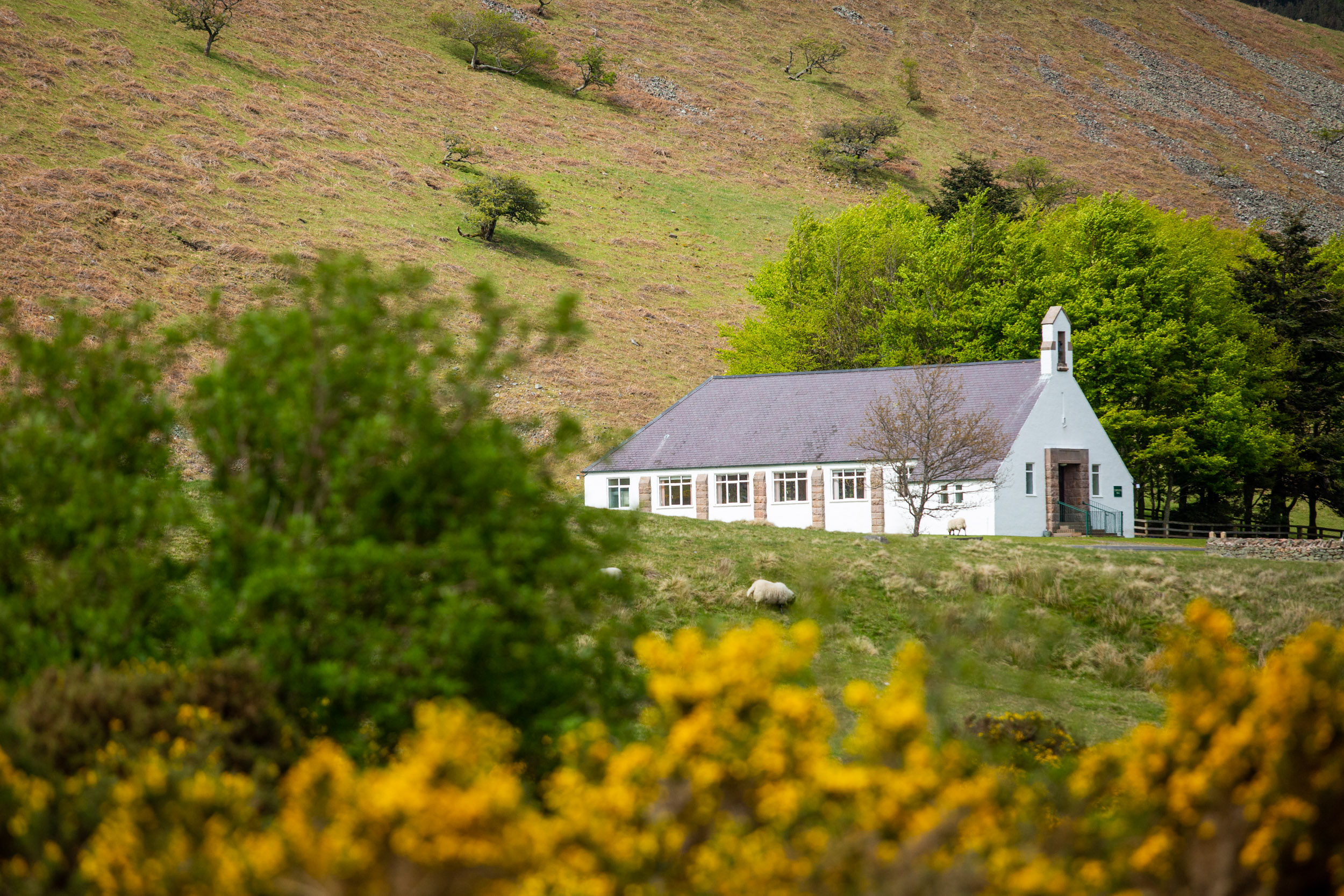
The new hall was originally named the Sutherland Memorial Hall though nowadays that title is rarely used. Incorporated into the new building was a bell to be rung on the occasion of the annual church service in the Valley (usually the first Sunday in July). Everyone is welcome and car permits are not required. Amazing dances, music making and social occasions have been held within its walls – and often outside too for so many people came they couldn’t all squeeze onto the dance floor! Since the introduction of drink driving laws coupled with a shrinking local community use of the hall has declined. Nowadays it is licensed for weddings.
Inside are photographs and memorabilia associated with the plane crashes, in particular the Flying Fortress and the scroll of honour presented by the USAAF to the local community which formally hung in Southernknowe school. A plaque presented by John Dagg’s daughter Margaret remembers Sheila the sheepdog.
With no general public access to the hall consideration is being given at the present time to the best way of displaying some of this archive material so it can be enjoyed by visitors .
Beside the road you will see a very big stone which gives its name to this particular part of the valley, the Cuddystone. It seems it was used as a mounting block, the word ‘cuddy’ being a local derogatory term for a horse.
In the field adjacent to the Cuddystone you are welcome to explore the earthwork remains of a settlement dating from Roman Iron Age times.
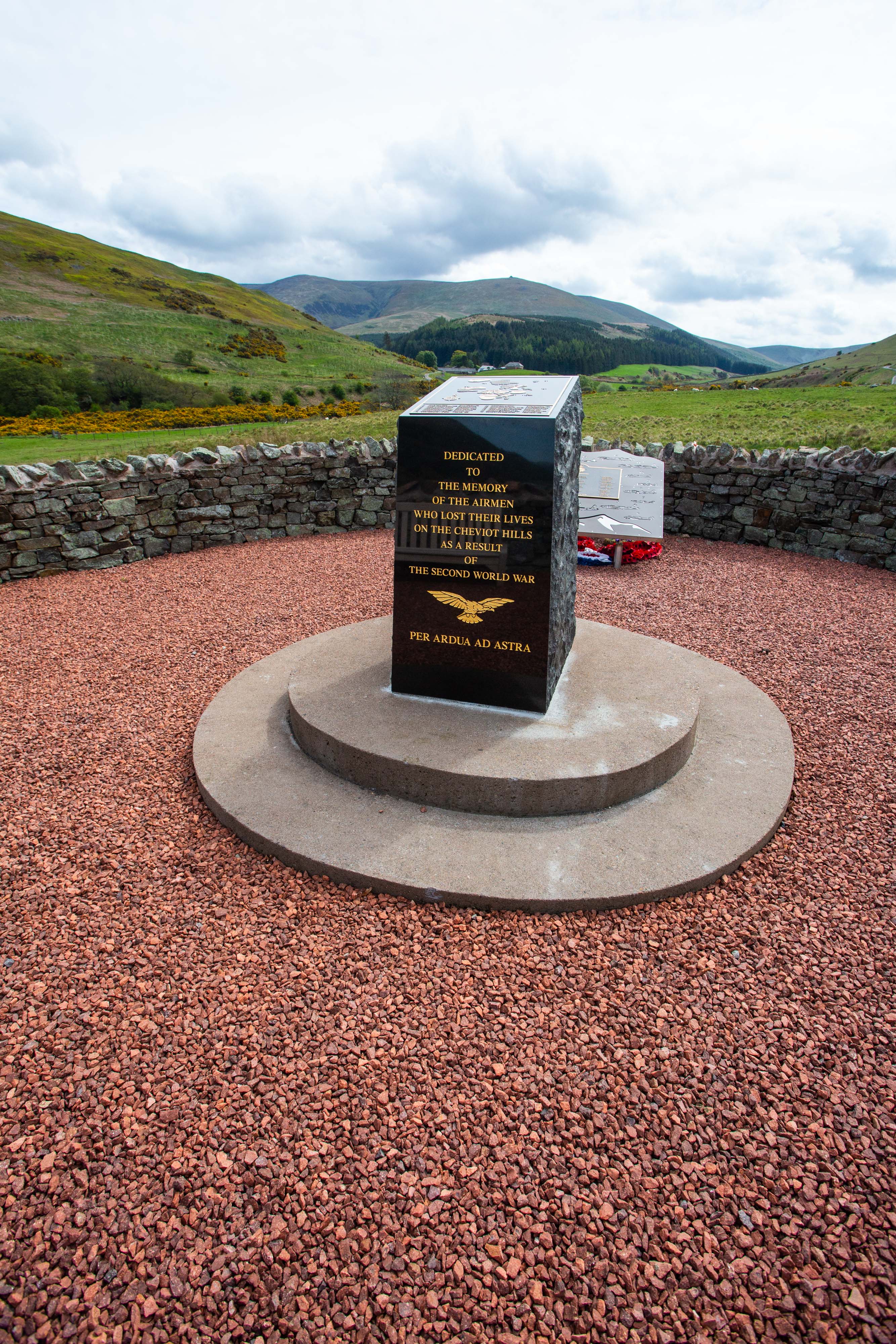
The Cheviot Memorial was erected to mark the 50th anniversary of VE Day and to honour not only the Allied airmen who made the ultimate sacrifice but also the endeavours and courage of “the people of the Cheviot” who helped rescue survivors, often in atrocious weather conditions.
Simple yet dignified, the memorial features a black slate monolith topped by an orientation map showing the crash sites not just around the College Valley but further afield too. It is set within a traditional circular sheep pen or ‘stell’ similar to those you will come across on the hills today.
Commissioned by RAF Boulmer the dedication ceremony took place on 19th May 1995 in the presence of HRH the Duke of Gloucester. In addition to dignitaries and RAF representatives the ceremony was attended by specially invited guests who all had a personal connection, one way or another, with the wartime plane crashes across the Cheviot and its foothills.
It was a very moving occasion with former airmen or their relatives, meeting up with the by now retired shepherds or their families, who had helped with the rescue efforts more than fifty years earlier. For many of those present it was a once in a lifetime reunion.
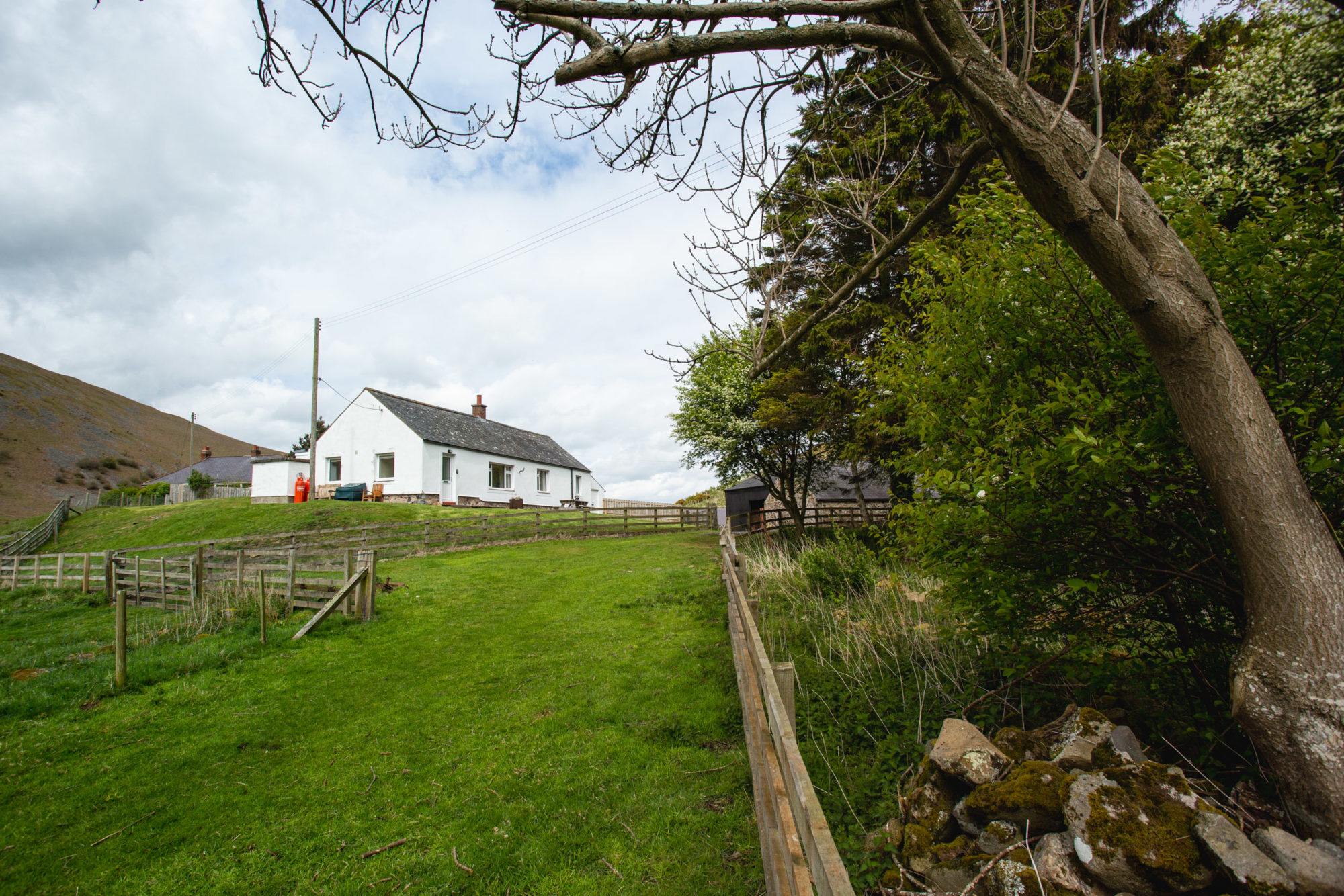
This small school with its unique setting, close to the confluence of the Lambden and College burns, served generations of valley children in the days before widespread mechanisation.
It began life in 1854 and after some periods of closure re-opened in 1911 and finally closed in 1968. Over the years pupil numbers varied from just three or four to sixteen in 1960; all ages of children were taught together by one teacher who lived in the little cottage at Coldburn just along the road.
For many years the school was just one room at the eastern end of Southernknowe farmhouse, the shepherd and his family living at the other side of the party wall. It was entered by a wooden porch where the children left their boots and coats.
When a new bungalow was built for the shepherd in 1939 the school was extended into the farmhouse to include a kitchen cum dining room.
Although remote by comparison to other rural village schools it was within walking distance of all the homes at the top of the valley though nowadays such journeys wouldn’t be contemplated for young children who had to contend with the terrain and often inclement weather. During heavy snow some children from more outlying homes would miss school for several weeks.
Dorothy Sharpe’s informative book ‘Children of the Outbye’ contains a fascinating glimpse of the old log books together with photographs of past pupils. Today, of course, the old school has a new lease of life as a holiday cottage.
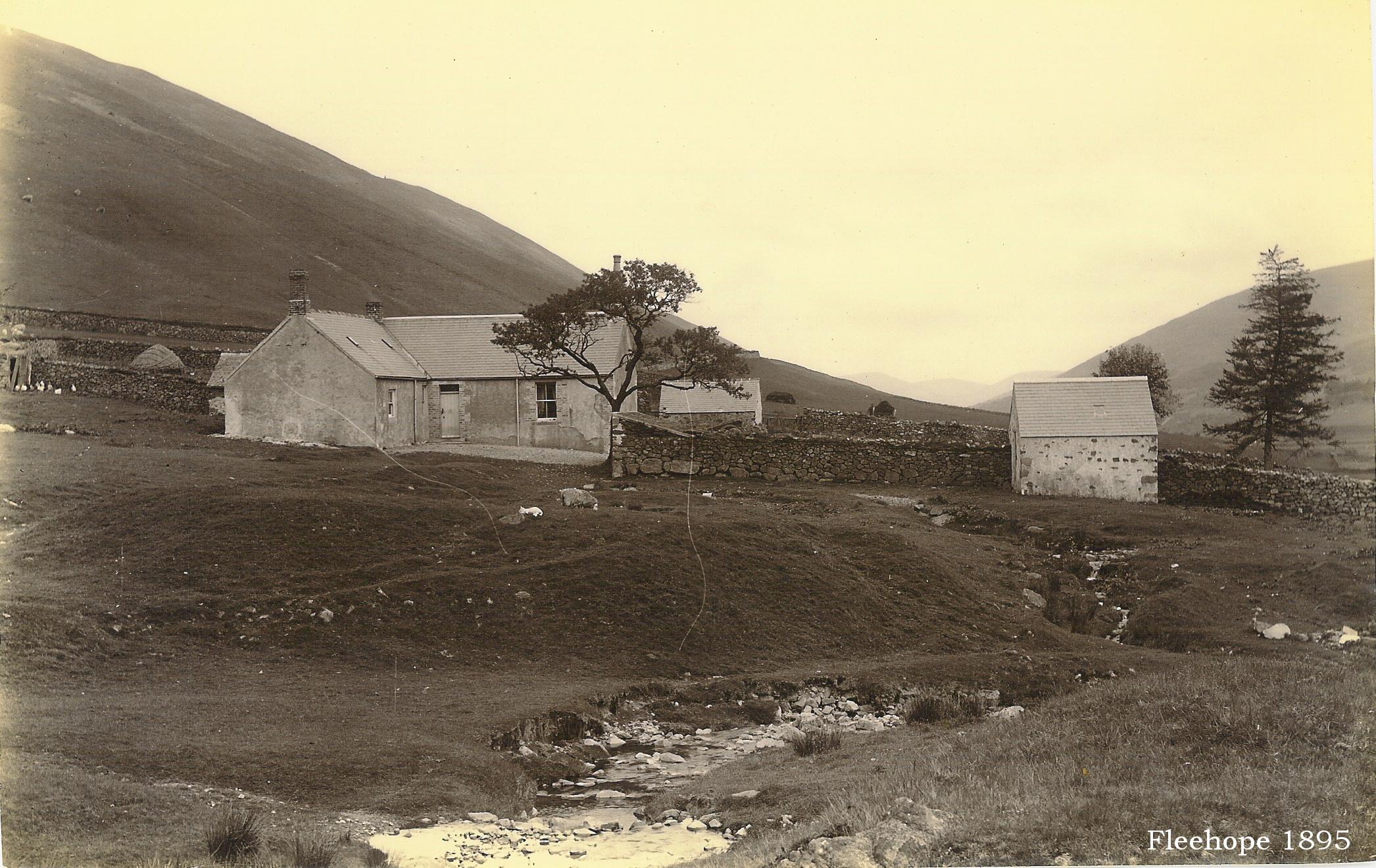
Until quite recently, the mid 1980s, sheep were the lifeblood of the College Valley. Most of the well maintained white painted homes that you see today were occupied by shepherds and their families, their children attending school at Southernknowe or when that closed, Kirknewton, sadly now also closed.
Traditionally a simple cottage with two or three bedrooms and a living room with range fire to cook on, the homes were adjoined by a byre which housed two or three cows (no bottled deliveries or plastic containers then) and their calves known as ‘followers’, a stable and a pigsty.
The shepherds were largely self sufficient in food. The annual pig killing kept the family in meat, vegetables were grown in the garden and only grocery supplies were bought in.
Back in the 1950s there were about 20 hired shepherds working in the valley. By the late 1990s that figure was down to 12. Now there are only two farmer-shepherds with other part timers at busy times of the year.
A delightful DVD entitled ‘Valley in the North’ (a copy is in each cottage) has captured for posterity the recollections and way of life of some of the shepherding families and people who lived in the valley in the 1940s and 50s, their homes at Mounthooly, Fleehope, Goldscleugh, Trowupburn Southernknowe and Dunsdale remembered with affection.
It was from Dunsdale with its striking setting at the foot of the Bizzle that two rescues took place – one during wartime and the other more recently in 1988. In the first Sheila tells her story of events on December 16th 1944 and her rise from hill sheepdog to canine heroine.
The second is recalled by Tony Iley, one of the last shepherds to live at Dunsdale.
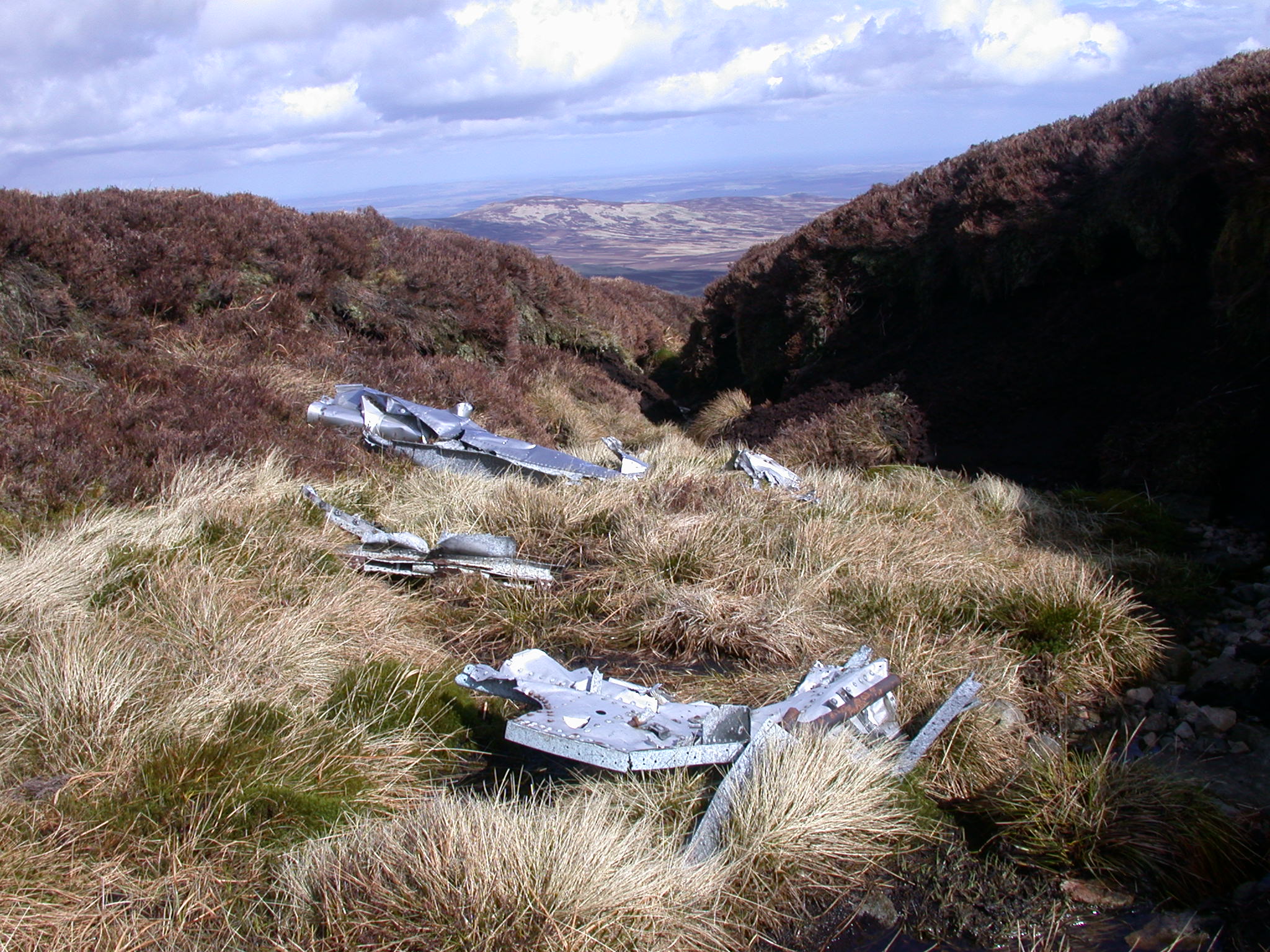
I am a black and white collie bitch belonging to John Dagg of Dunsdale. There’s nothing special in my breeding, I’m just a hill shepherd’s dog whose duties include the daily checking ‘herding’ of sheep on Mid Hill and West Hill, helping gather them to the pens for clipping or dipping and helping at lambing time.
On that December day we had done the daily tasks and it was about lunchtime when master heard the engines of a plane overhead and said to his wife, he didn’t think it would clear West Hill, that’s the hill you can see the bottom of outside the kitchen door. He heard an explosion and a ‘ploughing noise’ way up the hill.
It was quite fine in the valley then because master’s daughter Margaret came home from her work at Hethpool and remembered it as a nice sunny winter’s afternoon. We set off up the hill and as we climbed the fog and then snow came in.
By chance we met Frank Moscrop the young shepherd from Southernknowe. He had also heard the plane and thought it was in trouble. Up on the top the snow was blowing making it hard to see the plane but you could smell the burning… my collie instinct told me there were others out there somewhere so I went off to look.
Just sniffing around I found them, four airmen huddled together, sheltering in a peat hag
– and really pleased to see me – so I returned to master to lead him to where they were. Despite them shouting a warning that the bombs could explode at any time Frank went into the plane but found no-one else.
Unbeknown to us at that time two airmen had died in the crumpled nose of the plane and three others had found their way down to Mounthooly believing they were the only survivors. Relieved that the airmen weren’t Germans, the shepherd and his wife Mr and Mrs Cowens took them in and looked after them – one was very badly injured and had been carried down the hill by his two friends.
Two of our airmen were injured and two had no boots so Master did some first aid and used strips of parachute silk to wrap around their feet. We had a really difficult walk back down to Dunsdale, me trying to encourage them as they hung on to Frank and master. It was about 6p.m. when we got home and just half an hour later the bombs on the Fortress finally exploded, the blast so loud it shattered two windows in the house.
Several weeks after the crash, master and Frank were informed that they were to receive the British Empire Medal for their bravery and I was to be awarded the Dickin Medal – the Animals’ V.C. – by the Mascot Club of the People’s Dispensary for Sick Animals.
A ceremony was held at Southernknowe in July 1945. What a day it was with lots of important people, some from America and such a big crowd, not what I was used to at all. A huge American flag was spread over the grass and I was led up (I was never on a leader at home) to receive my medal from Lady Ross, the wife of Sir James Ross who was representing the Air Ministry. Feeling quite timid and a little frightened I just rolled onto my back as she tried to fix it to my collar.
My medal is inscribed with my name and the motto ‘They Also Serve’. I was told I was the first and only dog not connected with the Forces to receive this special honour. Of course I wouldn’t be wearing my medal everyday but master received a special extra length of ribbon for me to wear on my collar instead. The three colours on the ribbon represent the places that animals served in during the War – blue for the sky and sea, green for the grass and brown for the sandy deserts.
Postscript
In 1946 one of Sheila’s puppies, an almost white bitch named Tibbie went to America to the family of Sgt Roderick Frank Turner who had died in the B17 crash. John, junior, took her to Kirknewton Station in a specially constructed box on which he had written ‘Be kind to Tibbie’. He had tears in his eyes as he left her but she made the long journey safely, amidst considerable publicity, and was much loved in her new home.
The family left Dunsdale in 1948 and John, junior, took Sheila to help with his work. When he was called up for National Service she came back to the College Valley to live with his uncle at Fleehope.
Although every animal recipient of the Dickin Medal is entitled to a final resting place at the PDSA cemetery in Ilford when Sheila died she was buried at Fleehope a most fitting place for this very famous sheepdog.
In 2005 John Dagg’s British Empire Medal and Sheila’s Dickin Medal were auctioned in London and bought by an un-named private collector from the North East.
Forty four years after John Dagg set off from Dunsdale to rescue the airmen the house was again at the centre of a major rescue after a tragic accident occurred in the Bizzle, a steep sided ravine between West Hill and Mid Hill.
It happened when hard packed snow gave way beneath a group of walkers as they climbed up the edge. In the ensuing avalanche two of the group were killed and two others injured. One man managed to walk down to Dunsdale and finding the door unlocked went in and telephoned for the police.
It was Sunday February 7th 1988 and late that afternoon Tony Iley was returning home from a trip to Kelso Ice Rink with his wife Marilyn and sons Adam and Scott. In his diary he recalled: “Met a police incident van at Westnewton looking for the College Valley. He followed us up to Dunsdale. Dunsdale bank slippy. When we arrived there was a fire engine, ambulance and four or five police cars and other cars and a big arc light rigged up”
The house was full of police and emergency services people and soon afterwards an RAF helicopter landed with a doctor on board.
It was snowing quite heavily when Tony set off to walk up the Bizzle. Higher up he met other local shepherds and rescuers bringing one man down on a stretcher and carrying another.
“The helicopter left Dunsdale and came up the Bizzle very slowly about 20 feet above ground level. It was blowing a blizzard by now and pretty dark. The helicopter landed near the top end of the Bizzle and we put the two injured men in it. Walked back down to the landrovers and home to hot tea/coffee.
“Cows didn’t like the helicopter. M. brought them in.”
Tony went out again with the mountain rescue teams to help recover the two bodies, a difficult task as weather conditions deteriorated.
It was the early hours of the following morning before everyone left Dunsdale. “The phone had been in constant use for all that time – police, hospitals, ambulance and press even after we were in bed 1a.m. (but let it ring)”
The next day reporters and photographers arrived at Dunsdale and the local policeman too – with a box of chocolates for Marilyn.
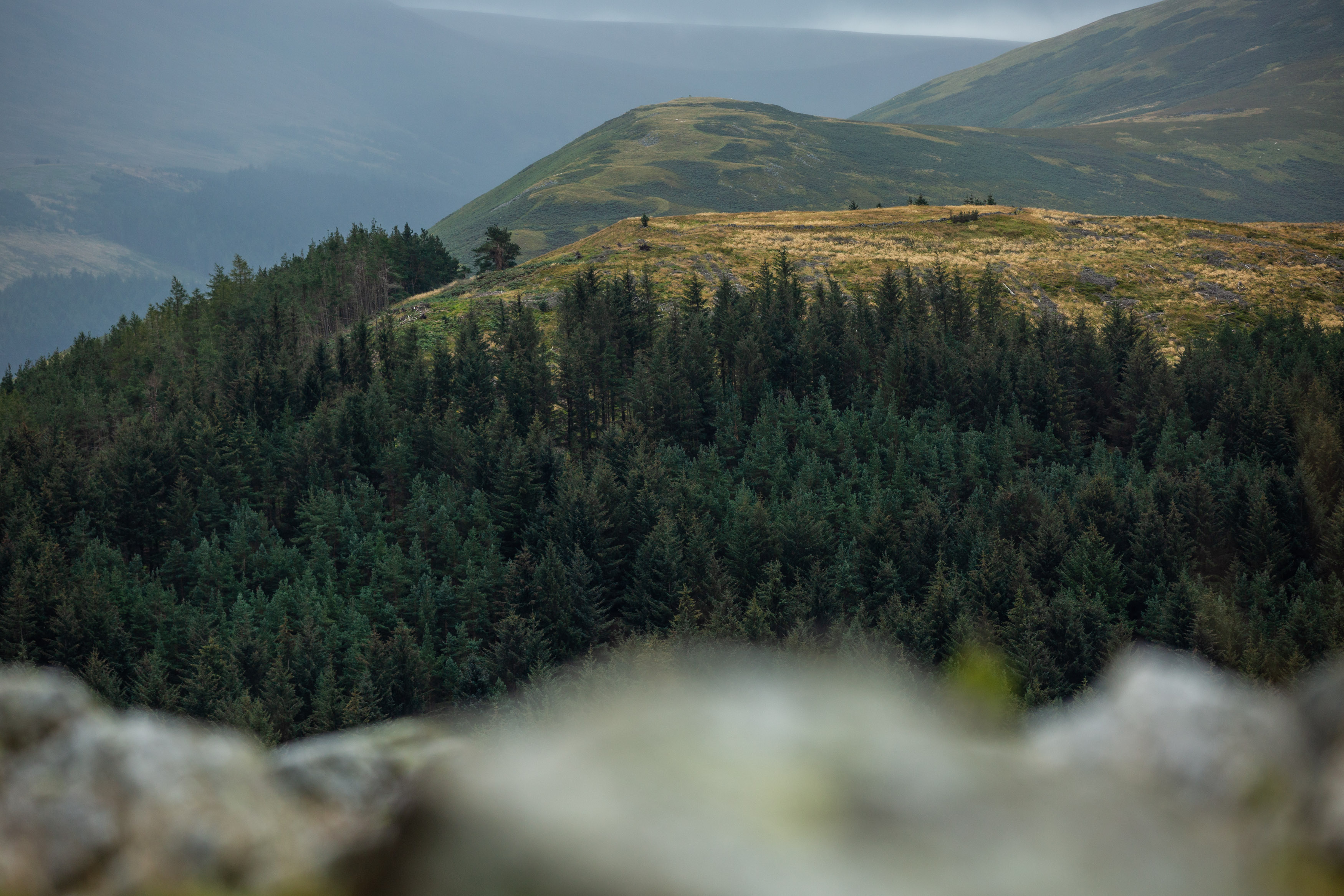
With numerous hillforts dotted across the landscape, some more accessible than others, perhaps the best known and impressive are Great and Little Hetha, Ring Chesters near Elsdonburn, North Blackhaggs and Sinkside.
Thanks to the Northumberland National Park Authority’s involvement with the Hillfort Heritage Project in 2004, four trails taking in forts and other antiquities were identified and way-marked for visitors to enjoy.
They all start from the car park at Hethpool where you will find an interpretation board showing the routes. In conjunction with these trails an excellent little guidebook entitled “A Beautiful Highland Place” is a must to read before you set out. With easy to interpret maps, good photographs and much information about early history in the Valley you will find a copy in your cottage but please do not take it home. You can buy your own price £2 from the Tourist Information Centre in Padgepool Place, Wooler, or the National Park Visitor Centre at Ingram.
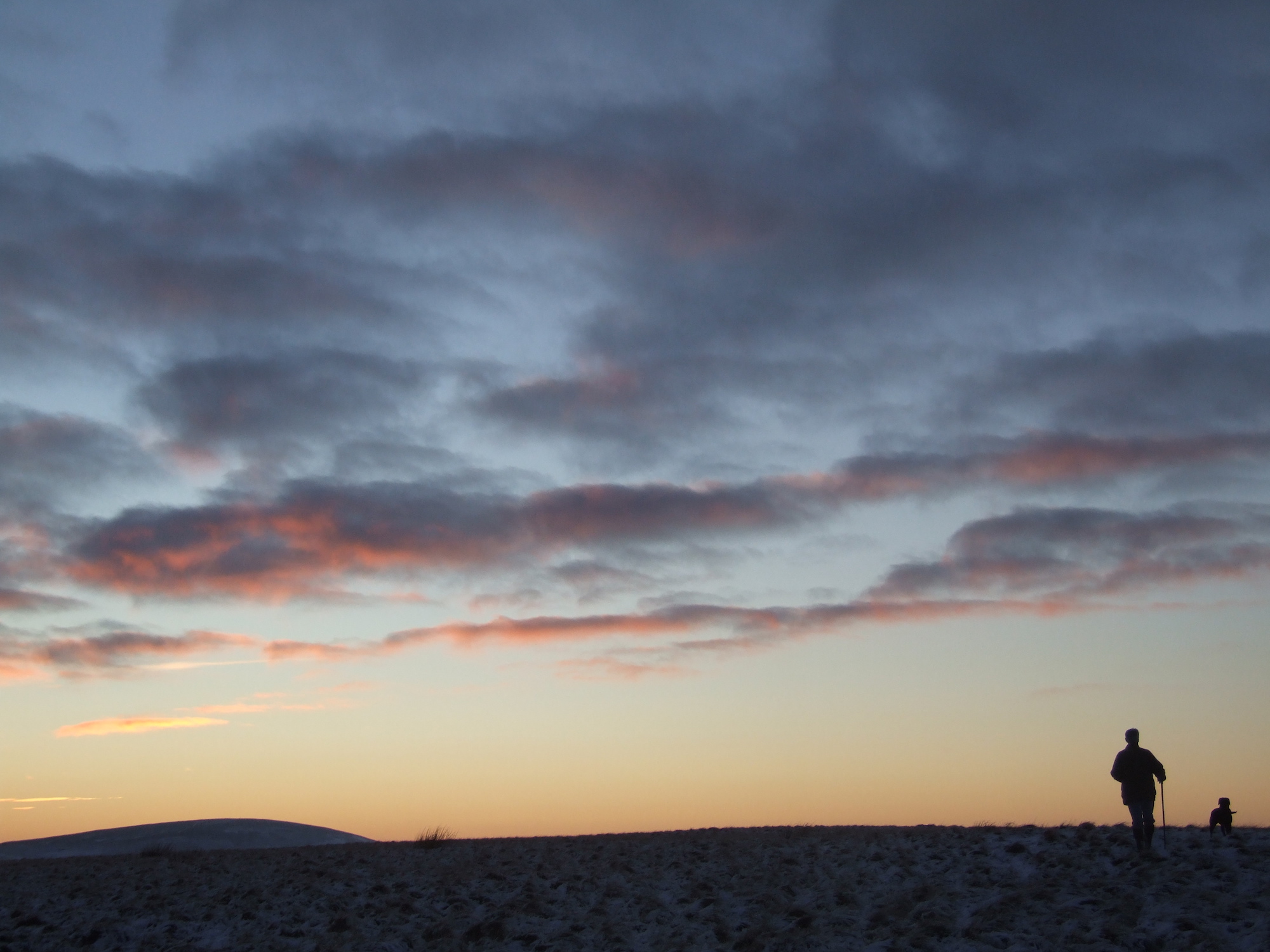
The sites where aircraft crashed during World War II on and around the Cheviot are the property of the Ministry of Defence. They are not war graves but nevertheless poignant places where airmen lost their lives. Out of respect please do not remove any remaining fragments of aircraft – just look and remember the men who flew them. Whilst there are graves of airmen in Kirknewton churchyard none of the Allied servicemen who died in the crashes listed below are buried there.
It is thanks to the sheer human endeavour, amazing courage and bravery of the shepherds who lived in the valley during the War years that many airmen were rescued. It is perhaps easy to underestimate the stamina required just to climb some of these high hills let alone help injured men down to safety.
Our thanks to Chris Davies, author and aircrash researcher for his help with locations. His new book ‘Almost Forgotten’ is due to be published later this year.
Goldscleugh
Plane: Hawker Hart Trainer K6482
Crashed: 10/10/1939
The aircraft was being flown from Turnhouse in Scotland, to Acklington, Northumberland. It was a day of low cloud and rain and the pilot Sgt. T. Mycroft had elected to fly on a compass course. The plane did not have sufficient altitude to clear the high ground, south of Goldscleugh, to the west of Woolhope Crag and in the ensuing crash Sgt. Mycroft was killed. A small cairn marks where he died and considerable wreckage lies close by.
West Hill
Plane: Wellington Z1078
Crashed: 15/1/1942
The bomber was returning from an evening raid on Hamburg to RAF Snaith in Yorkshire. It was seen flying low in a southerly direction in the valley just before midnight. The weather conditions were abysmal, with driving snow and wind, when the plane struck the north side of West Hill, a ‘shoulder’ of the Cheviot.
The six man crew included British, Australian and New Zealand airmen. With poor visibility local shepherds Arch Guthrie, John Dagg and James Goodfellow were guided to the crash by the smell of burning. Three survivors were brought down to John Dagg’s home at Dunsdale. Sadly the two New Zealand airmen and the British wireless operator did not survive.
Bellyside Hill
Plane: Supermarine Spitfire P8587
Crashed: 25/3/1943
The plane crashed in low cloud and after impact broke up and caught fire. The pilot F/Sgt Eric Lindsay Brown, Royal Australian Air Force, aged 24, was killed. He was in the middle of a flying course with 57 Operational Training Unit at RAF Eshott, south of Alnwick. The exact site of the crash was re-discovered by Chris Davies in July 2010 and now a small cairn marks the spot.
Cheviot Summit
Plane: Short Stirling EE972
Crashed: 25/9/1944
The bomber was flying south on a training flight when it came down about one hundred yards to the north east of the cairn. Two of the eight-strong crew who suffered only superficial injuries walked down to Langleeford in the neighbouring Harthope valley and alerted the local shepherds who walked out to the crash site. Two airmen died in the accident and another seriously injured crewman was carried down the hill on a wooden hurdle (a small portable gate), a difficult feat over such rough terrain. He sadly died a few days later.
The aircraft was flying in low cloud and the aircrew had no maps. The accident report records that strange atmospheric conditions had been experienced that day which may have contributed to the crash. Little remains of the plane today except an oil cooler on the summit and an engine cowling in Coldlaw Sike.
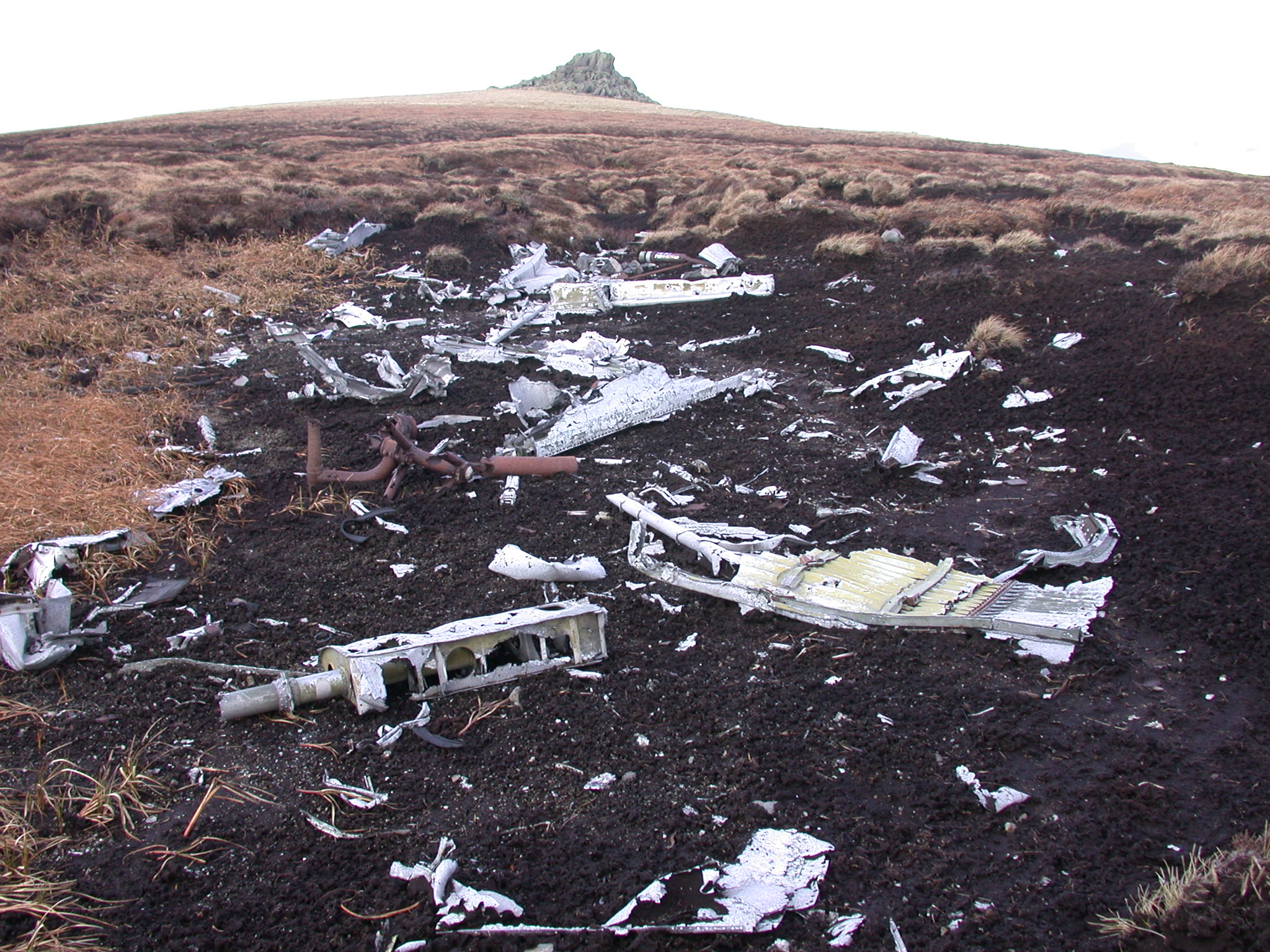
Cheviot Summit on Goldscleugh ground
Plane: Avro Lancaster KB745
Crashed: 4/10/1944
Only a few small fragments remain of this huge bomber which was capable of carrying a very large bomb load. The plane had taken part in a daylight raid on the U-boat pens at Bergen, Norway, and was the only one that failed to return home safely. It was eleven miles off its intended course when it crashed killing the six Canadian and one British airman on board. The tragedy was discovered by 14-year-old Basil Oliver from Langleeford who had also been at the Stirling crash just nine days earlier. He had been sent to check the sheep this day because all the other shepherds were away to the draft ewe (an older ewe being sold to make way for a younger one) sale at Rothbury. This was the worst loss of life sustained in the any of the local wartime plane crashes a tragedy that Basil, now in his 80s, will never forget.
West Hill near Braydon Crags
Plane: B17G Flying Fortress
Crashed: 16/12/1944
This huge plane was on its way to bomb the railroad marshalling yards at Ulm in Germany when the mission was aborted due to adverse weather conditions. The planes were ordered to disperse and fly home and to jettison their bombs in the North Sea.
As it happened the pilot Lt. George Kyle was unable to carry out the latter because whenever gaps appeared in the cloud shipping was sighted below. On the strength of radio fixes, the plane set course for RAF Molesworth, the crew unaware they were off course and some 20 miles north of Cheviot.
Flying at only 2000 feet to avoid icing the plane was too low to clear West Hill when it crashed in blizzard conditions just about lunchtime. Of the crew, two were killed but the other seven survived. See ‘Sheila’s Story’.
Much wreckage remains today, a humbling reminder of events more than 60 years ago.
Cheviot
Plane: Vickers Warwick HG136
Crashed: 23/7/1946
This plane was en route to Brackla in Fife to be scrapped when it crashed about one mile west of Cheviot summit, within sight of Auchope Cairn. The wreckage and bodies of the three crew members were found by hill walkers two days after the crash. Substantial parts of the aircraft, including an engine, can still be seen today, a poignant legacy of the war. The crash was attributed to the plane flying an incorrect route when in fact it should have followed the coastline.
